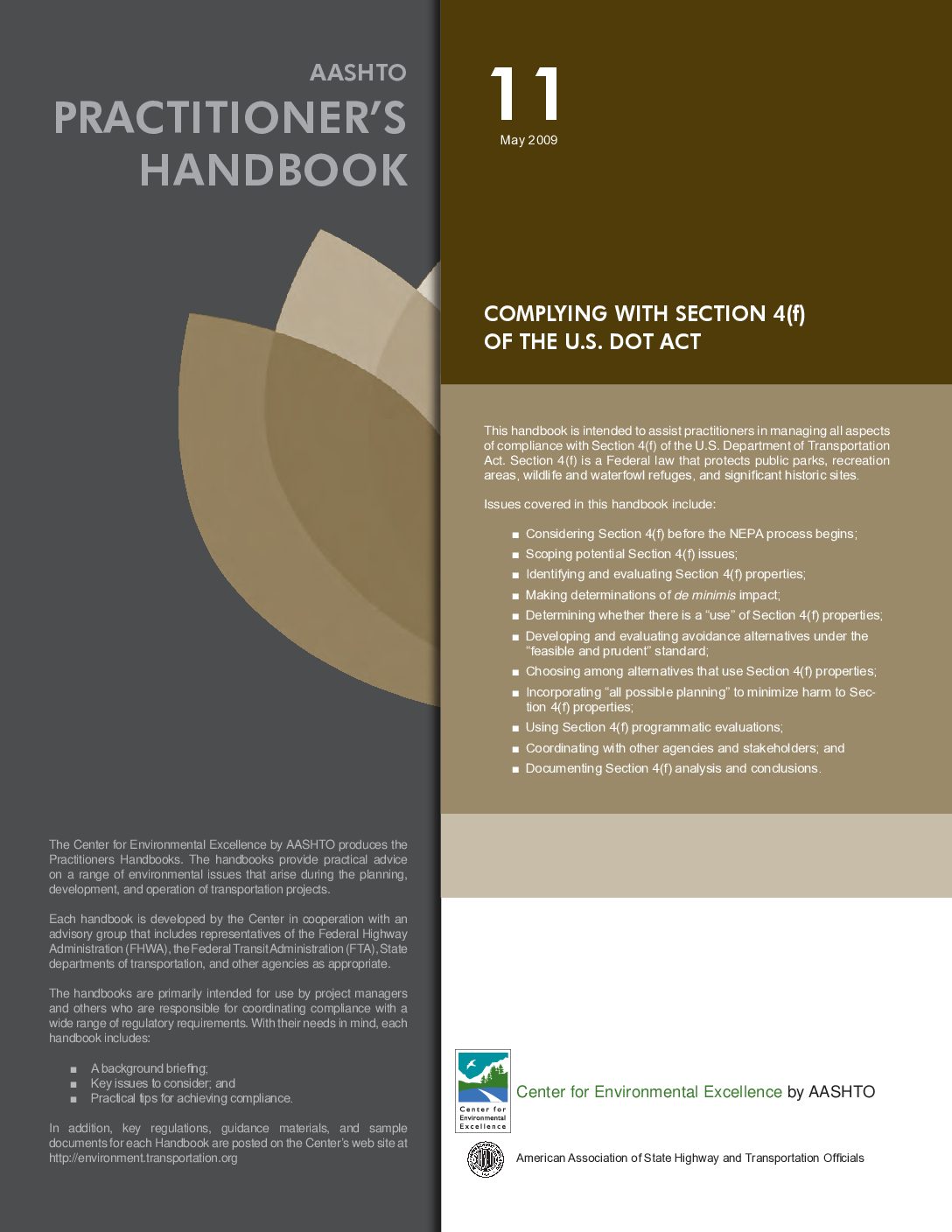Section 4(f) was enacted in 1966 as part of the U.S. Department of Transportation (U.S. DOT) Act, which established the U.S. DOT. It is now codified in 49 U.S.C. § 303(c); essentially identical language also appears in 23 C.F.R. § 138. Section 4(f) applies to all agencies within U.S. DOT. Section 4(f) protects significant publicly owned public parks, recreation areas, and wildlife and waterfowl refuges, as well as significant historic sites, whether they are publicly or privately owned. Recent legislative and regulatory changes present new opportunities to streamline the Section 4(f) decision-making process. But they also contain new definitions and new legal standards that must be carefully considered when preparing Section 4(f) documentation. This handbook is intended to help practitioners take advantage of the flexibility afforded by the recent changes to Section 4(f) while ensuring that all requirements are met. It addresses the full range of Section 4(f) compliance options, including individual Section 4(f) evaluations, de minimis impact determinations, and programmatic Section 4(f) evaluations.
Issues covered in this handbook include: considering Section 4(f) before the NEPA process begins; scoping potential Section 4(f) issues; identifying and evaluating Section 4(f) properties; making determinations of de minimis impact; determining whether there is a “use” of Section 4(f) properties; developing and evaluating avoidance alternatives under the “feasible and prudent” standard; choosing among alternatives that use Section 4(f) properties; incorporating “all possible planning” to minimize harm to Section 4(f) properties; using Section 4(f) programmatic evaluations; coordinating with other agencies and stakeholders; and documenting Section 4(f) analysis and conclusions.

